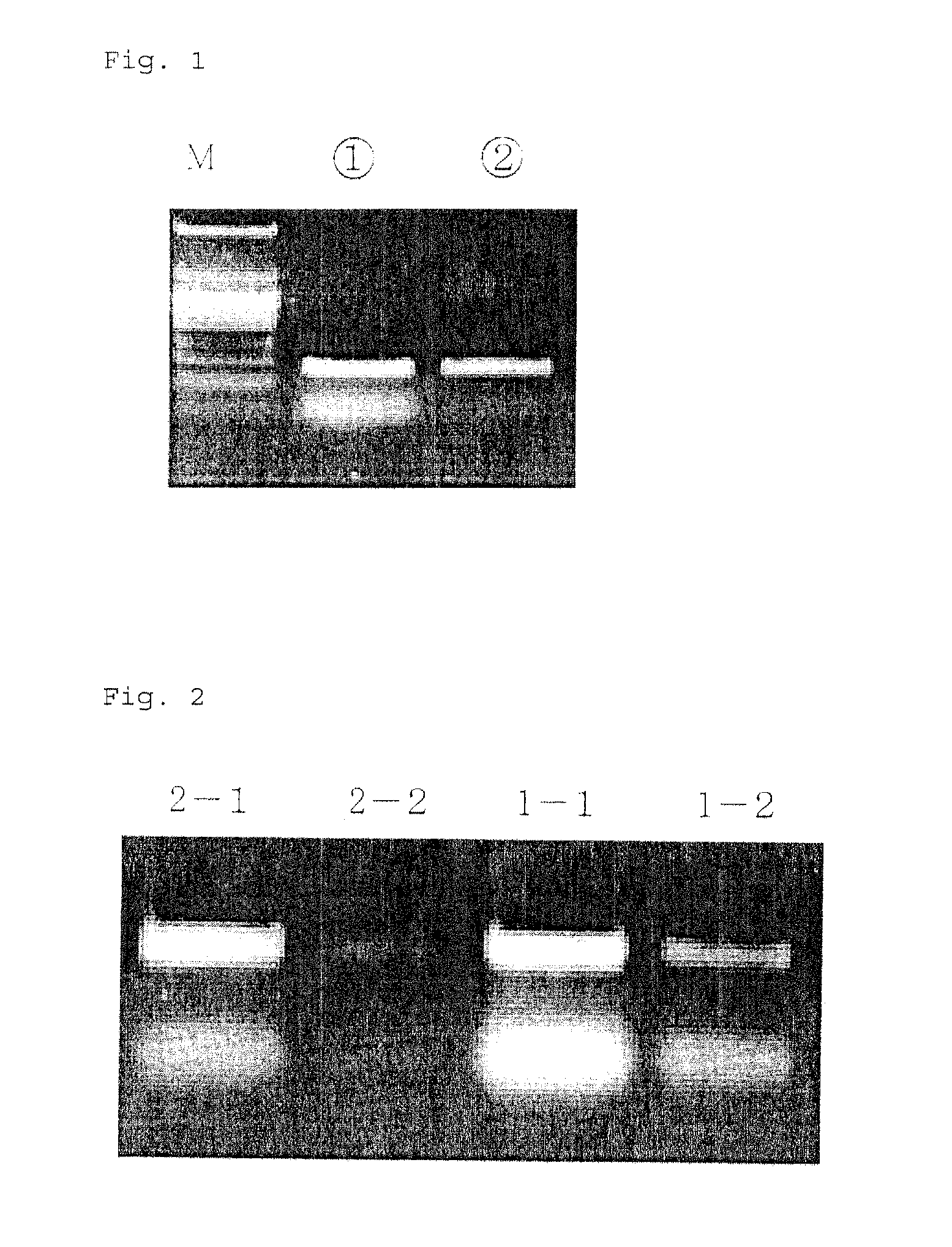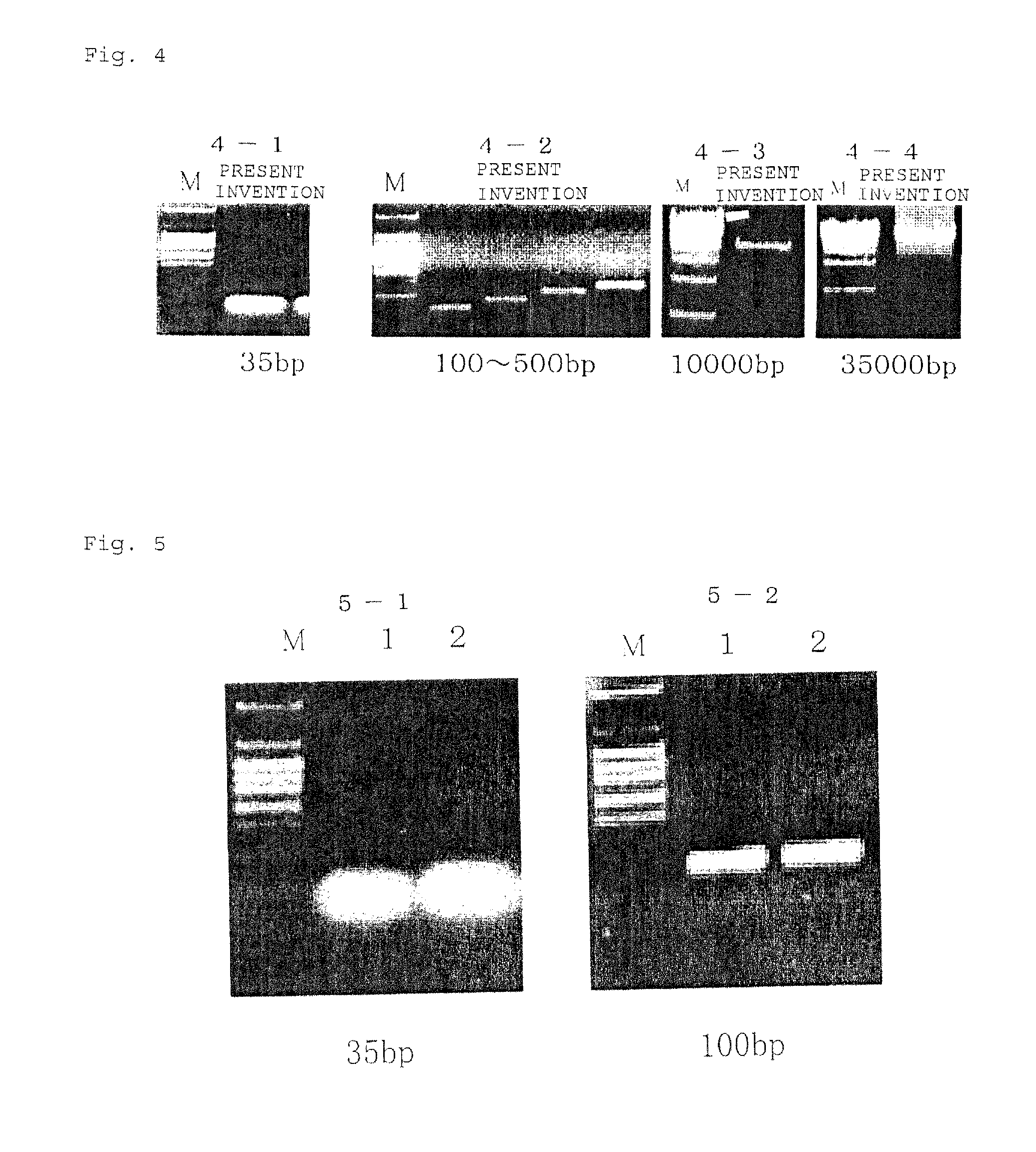Mechanism of separating and purifying DNA and the like
a technology of dna and purification method, which is applied in the field of separating and purifying dna, can solve the problems of reducing efficiency contrarily, requiring much time in the method, and difficult to separate molecules having similar molecular weights, so as to facilitate the occurrence of a reaction, reduce the difficulty of separating dna and the like, and achieve the effect of ultra-efficient purification
- Summary
- Abstract
- Description
- Claims
- Application Information
AI Technical Summary
Benefits of technology
Problems solved by technology
Method used
Image
Examples
example 1
[0170]In purification of a PCR reaction solution (fragment DNA), 50 μl of PCR amplification reactant is mixed with 300 μl of buffer A1 (1 M guanidine hydrochloride, 0.2 M potassium acetate, 50% 2-propanol). A silica monolith solid phase column 9 is inserted into a collection tube 8, and the mixture is injected into the silica monolith solid phase column 9, and centrifuged in a 1.5 ml centrifuging tube. The silica monolith solid phase column 9 is subjected to a washing treatment with a B buffer (0.2 M potassium acetate, 50% ethanol) so as not to contain a salt.
[0171]For elution, 20 μl of buffer C for elution (EDTA 4 mM, Tris-HCI 10 mM, pH 8; or sterile DNA / RNA free water) is passed through the silica monolith solid phase column for centrifugation with another 1.5 ml centrifuging tube to perform centrifugal separation. A PCR product thus purified (fragment DNA) contains no primer, dNTPs, polymerase and salts, and can be used directly in a subsequent operation. (See FIGS. 1 and 2) In F...
example 2
[0181]In purification of fragment DNA from agarose gel, a PCR amplification product is electrophoresed using standard or low-melt agarose gel (using a TE or TBE buffer), and DNA is separated in agarose gel (0.5% of TE or TBE). DNA fractions to be isolated are cut out from the gel by a clean razor or knife, and put into a 1.5 ml centrifuging tube. They are mixed with 300 μl of buffer A2 (2M guanidine thiocyanic acid, 0.4 M potassium acetate, 30% 2-propanol), and incubated at 60° C. for 5 minutes or until gel slices are fully dissolved.
[0182]For this solution, the solution is injected into the monolith solid phase column 9 attached to the collection tube 8 and centrifuged in a 1.5 ml centrifuging tube in accordance with example 1. The monolith solid phase column 9 is washed by buffer B (0.2 M potassium acetate, 50% ethanol) so as not to contain a salt.
[0183]For elution, 20 μl of buffer C (EDTA 1 mM, Tris-HCl 10 mM (pH 8); or sterile DNA / RNA free water) is passed through a column for c...
example 3
[0185]100 μg of DNA is treated with a restriction enzyme. The DNA restriction digested solution was mixed with 300 μl of buffer A1 in accordance with example 1, and the subsequent treatments were carried out in the same manner as in example 1. The purified DNA obtained after elution contained no restriction enzyme and salts, and the absorbance determination ratio 260 / 280 was 1.8, which is a satisfactory value.
PUM
| Property | Measurement | Unit |
|---|---|---|
| diameters | aaaaa | aaaaa |
| diameters | aaaaa | aaaaa |
| length | aaaaa | aaaaa |
Abstract
Description
Claims
Application Information
 Login to View More
Login to View More - R&D
- Intellectual Property
- Life Sciences
- Materials
- Tech Scout
- Unparalleled Data Quality
- Higher Quality Content
- 60% Fewer Hallucinations
Browse by: Latest US Patents, China's latest patents, Technical Efficacy Thesaurus, Application Domain, Technology Topic, Popular Technical Reports.
© 2025 PatSnap. All rights reserved.Legal|Privacy policy|Modern Slavery Act Transparency Statement|Sitemap|About US| Contact US: help@patsnap.com



